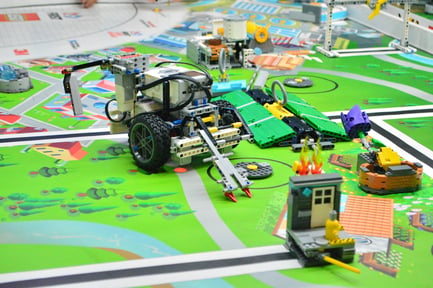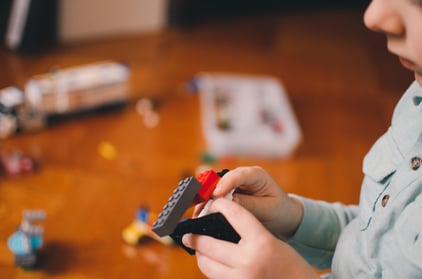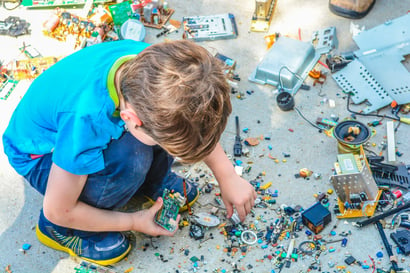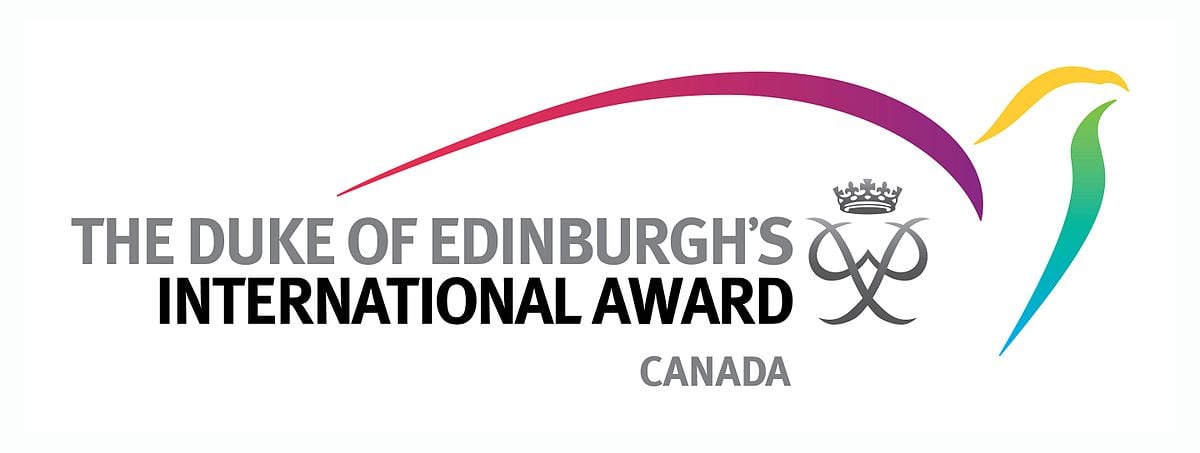Sometimes, simple is best! Read on to see how Lego has re-surged as a child development-friendly tool for the 21st century.
Unsurprisingly to most of us, digital games and entertainment have taken over from the material toys and imaginative games of the past. Where digital has reinvented the world of education, it has also revolutionised leisure time for children growing up in the modern day.
According to Lego’s Play Well Report 2018, 8/10 children say that playing online is their favourite form of play, and that it rates 12% higher in popularity than any other pastime. Could this mean the end of play as we know it?
Actually, no.

Enter Lego bricks - the small, rectangular blocks that slot into each other to make towers, castles and anything else a child desires. Over the past three decades, the Lego Education brand has been nurturing its collaboration with pedagogical experts to rebrand their product. Now, it is a toy whose simplicity helps teachers develop their students’ soft skills whilst remaining a classic game, loved by children.
At Haut-Lac International Bilingual School, we offer a Lego club and use Lego with our infant students during both free time and lesson time, to achieve particular learning objectives. As well as the simple, plastic blocks, Lego robots are also a major part of our programming lessons and robotics clubs.
As Caz, our IT teacher, says, “They are great for making students communicate and work together. They must listen to each other’s ideas so that they can build the best robot whilst planning ahead to ensure it has all the functionalities it needs to be programmed. Of course, things might not go according to plan. This exercise teaches them to fail and to try again, which is such a valuable lesson.”
Just like Caz, educators all over the world agree that Lego can benefit child development in many ways, especially their soft skills.
4 main benefits
Collaboration & Communication
When playing with Lego together, students learn to explain their thought processes and ideas clearly, discuss how they will reach their goals and describe what they have made. Working on a task together teaches them to delegate jobs, share and talk as they work so as to build on each other’s ideas.
.png?width=382&name=Sans%20titre%20(57).png)
Spatial Skills
Children almost instinctively create a plan for their Lego projects before starting to build them. They envisage how different parts will work together and when they reach road blocks, they look at things from different angles and experiment to get it right. It is proven that practice helps us improve our spatial skills, which are useful in later life, especially for careers such in engineering and architecture.
The blocks are also great counting aides. Teachers can use them in class to demonstrate mathematical concepts, such as fractions or multiplication, as their familiarity makes them a friendly, educational device.
Creativity
Lego is a blank slate for children. On their own, the blocks look like uninteresting pieces of plastic. Yet it is what a child imagines they can do with their Lego that transforms it. Three blocks can quickly become a house or a barn, and it is this creativity that educators seek to nurture through Lego activities.

Persistence and Self-Esteem
Playing with Lego is great for motor skills, encouraging children to wrap their heads and hands around the many possibilities Lego provides. Of course, construction is trial and error, and sometimes too much pressure or a brisk movement can ruin a well-engineered structure. In such a case, Lego is a way for kids to learn perseverance, and not to give up but to try again, perhaps with a different approach.
A finished design is also a satisfying confidence booster for kids. The sense of achievement is a welcome lift that will fuel their progress in the future.
Ultimately, Lego may just be the game that draws our kids away from their screens and reminds them what it is to play. As stated by the World Economic Forum, playtime will be one of the most important ways to prepare young people for the workplace of the future. Now is therefore as good a time as any to start bringing that playtime to the forefront of learning.
Long may the manual play revolution reign!

Katie Harwood


-1.png)










